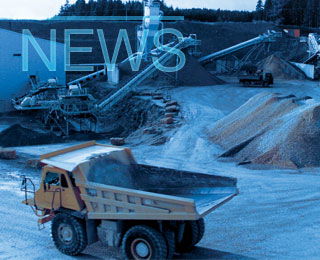Kenya-based cement producer Athi River Mining (ARM) earlier this week reported a significant rise in 2011 cement sales on the back of new domestic cement capacity. The company is now nearing completion of the first of three projects in the Tanzanian market and has secured additional funds for expansion as it seeks to harness increasing demand in the promising East Africa region.
In 2011, group turnover rose 37% YoY to KES8.2bn (US$99m) as cement sales increased 72%. This was helped by “the commissioning of new capacities which came on-stream in late 2010,” ARM said in a statement. Pretax profit advanced 23% to KES1.36bn as EBITDA gained 31% to KES2.2bn but operating margins were down 2% in 2011, mainly due to the “rapid increases in cost of electricity, fuel and imported spare parts,” the company added. The group did, however, benefit from a reversal in fortunes on the Kenyan shilling in the final quarter. Last year also saw the company increase its presence in the region by acquiring a controlling stake in Kigali Cement, which operates a 100,000tpa grinding plant in Rwanda.
With its recently-expanded 1500tpd integrated cement plant in Kaloeni and 2000tpd grinding plant in Athi River, the company has a combined grinding capacity of 1Mta. Cement production, meanwhile, stands at 650,000pta. Over in neighbouring Tanzania, ARM is currently commissioning a 750,000tpa grinding plant in the capital Dar es Salaam, which will be operational by June this year. Also in Tanzania, a 1.2Mta integrated works in Tanga and another 750,000tpa grinding facility are set to enter service in early 2013. Upon completion, these volumes will take ARM’s total capacity to 2.6Mta. The group has also said that it is looking to extend its footprint beyond the local region with greenfield projects under planning in two more African countries where mining licenses and site acquisitions have been concluded. A further two projects have also been earmarked for possible growth beyond 2016.
To support the company’s expansion initiatives across East and Southern Africa it has just secured a KES4.2bn (US$50m) convertible loan from a Nigerian investment firm, Africa Finance Corporation (AFC). The notes could be converted to equity within a period of six years, a move that would see AFC hold a 13.6% stake in ARM.
For the first two months of 2012, ARM has reported strong YoY growth in turnover, mainly through increased export sales. However, while the outlook remains positive, the company notes that the Kenyan elections remain a concern. “The East African economies are continuing to grow briskly and demand for cement is expected to continue growing throughout the region. The Dar es Salaam cement plant is expected to contribute further growth to the company’s turnover in second half of 2012 and provide a measure of risk diversification as Kenya prepares for an election towards the end of the year with a possible slowdown in the construction industry.”
The East African cement market (comprising Kenya, Uganda, Tanzania) has been witnessing a positive growth trend thanks to a number of demand drivers although a competitive landscape is now emerging with new capacities coming on-stream. Government infrastructure spend has been on the rise across the region while the boom in private construction has been spurred by rising demand for housing by an expanding middle-income population. As such, Standard Investment Bank of Kenya reports that cement consumption has risen at a CAGR of 11.7% over the past 10 years to 7.6Mta. A CAGR of 10.2% is forecast for the five years to 2015, taking demand to 11.4Mta.
Cement capacity in turn has increased by 68% over the last five years to 10.6Mt in 2011. Further rises of 40% to 14.8Mta in 2015 are predicted with Kenya remaining the dominant force, accounting for 51% of the total. However, since 2008, capacity expansions have mainly been driven by new local entrants and the fragmented industry structure will translate into increased competition. Furthermore, there has been no significant investment in clinker capacity over the past 10 years as the quality and mapping of limestone present key challenges. With most expansions involving grinding facilities, producers with integrated facilities such as ARM benefit from lower production costs and stand to gain extra revenue from sales of clinker surpluses.
